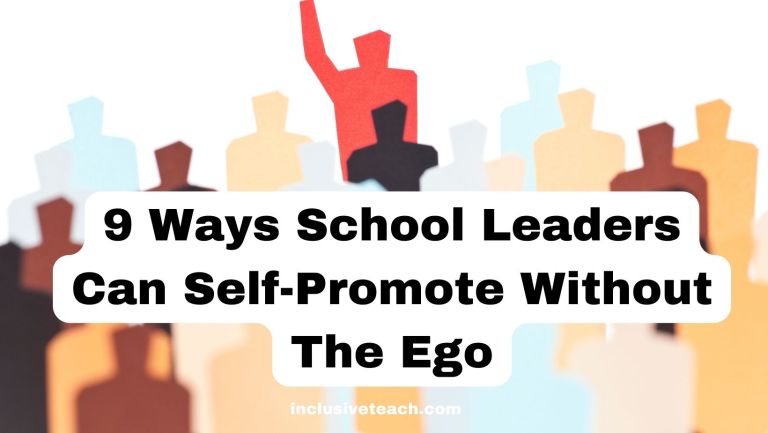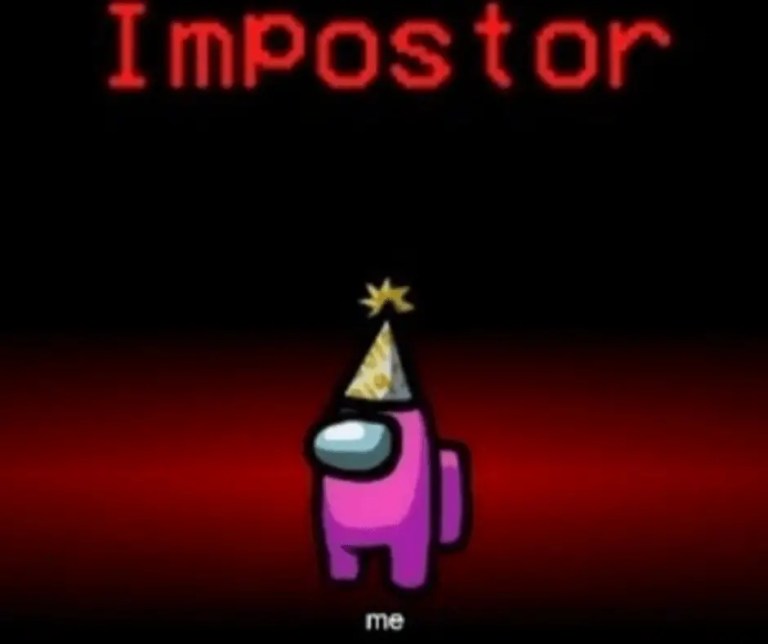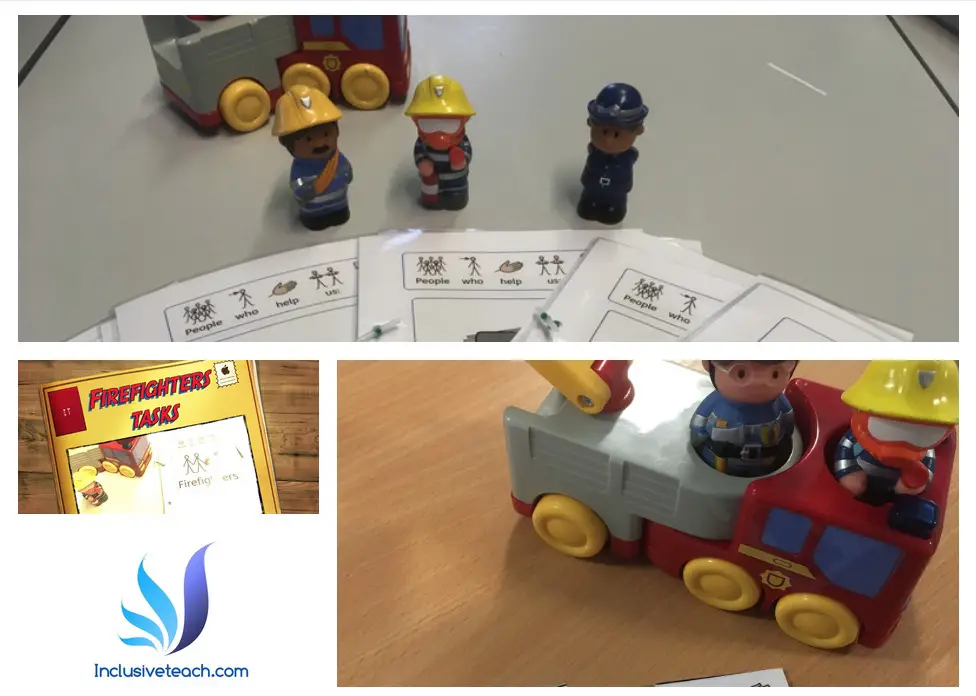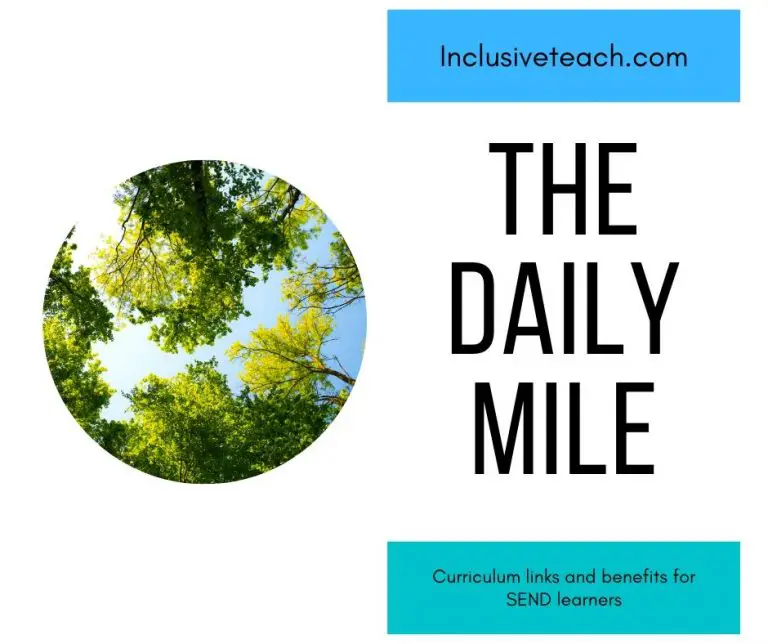20 Primary Games For School Classes
Fun Classroom Games for Primary School Children
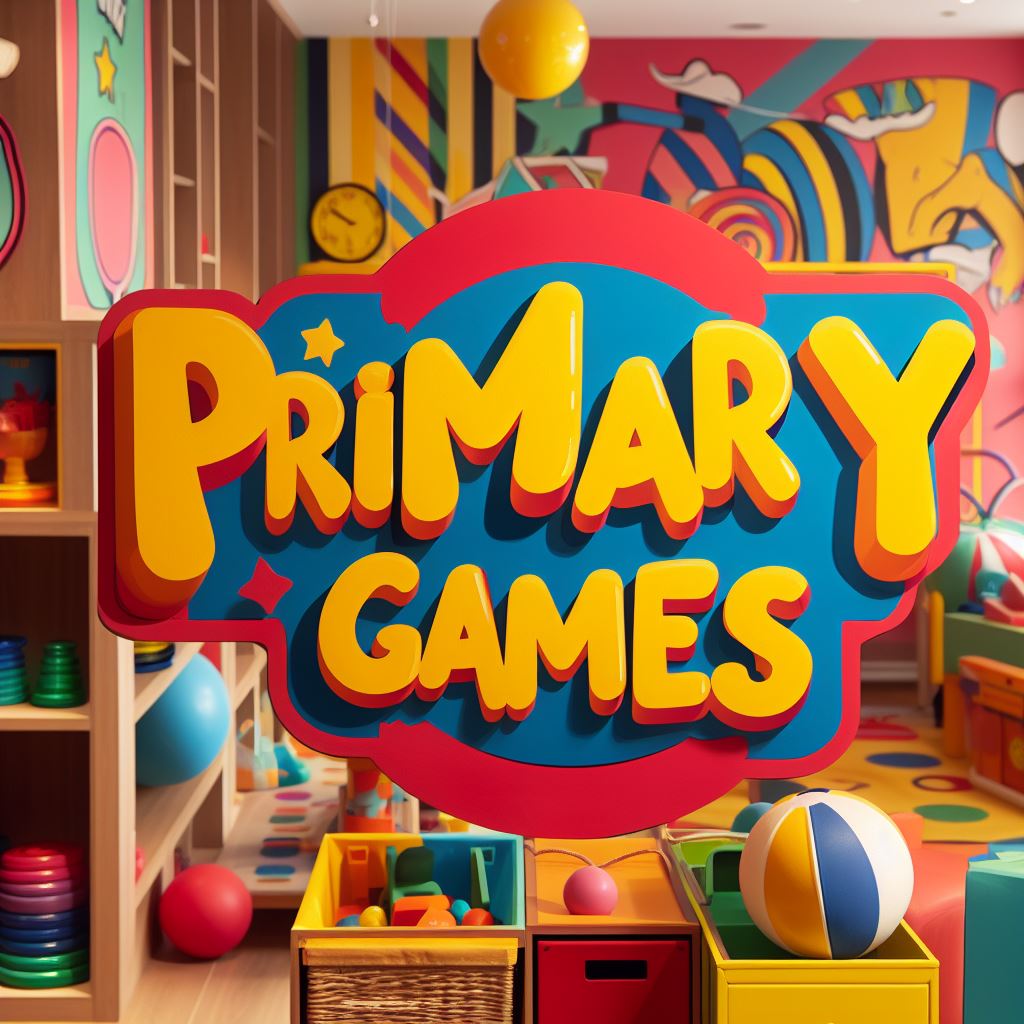
When looking for engaging games for primary school, it’s important to find activities that entertain young learners while providing educational value. This article outlines quick and easy classroom games to try. In the ideas for games and activities, I have tried to link them to learning intentions. We also have a post on games to teach Kindness.
No-Prep Primary Games That Teach Core Skills
Games present a fun way for primary students to build skills in key areas without even realising they’re learning. You can keep these no prep games for primary classes up your sleeve until you need them. Maybe things are getting a bit busy in class and you need to take a short break from planned learning to settle the class:
- Listening Games – “Simon Says” improves listening and response time through verbal commands. A classic game kids love.
- Vocabulary Games – “I Spy” builds observation and descriptive word skills as students identify objects. Requires no materials.
- Literacy Games – Flashcard games with sight words, letters and numbers reinforce early reading and math skills. Easy to make or find printables online.
- Thinking Games – Timed challenges introduce friendly competition to puzzles, math problems etc. Focuses attention and concentration.
- Imaginative Play – Role playing exercises communication, creativity and social skills. Tap into young imaginations.
- Memory Games – Remembering images/objects boosts cognitive development. Many printable or digital memory game options exist.
Keep Games Purposeful Yet Playful
Choose games deliberately tied to curriculum goals across subjects. Blend physical movement, thinking skills and social play. Above all, keep activities fun and engaging! Games provide a wonderful outlet for primary students to learn new skills while staying active and enjoying classroom time.
Planning and Preparation Before Using Games With Your Class.
Thoughtful preparation on how to play games at school is important when incorporating games into primary school lessons. Without clear rules and safety protocols established in advance, activities run the risk of becoming chaotic or even potentially dangerous. However, adequate planning can help ensure games are an engaging and productive learning experience for young students.
Developing age-appropriate instructions including visual supports and establishing behavioural expectations before starting a game helps promote self-control and focus. Clearly communicating guidelines reduces disruptions so children stay on task. Proper planning also identifies any potential risks so teachers can take preventative measures and curb incidents. Well-designed rules build structure while still allowing flexibility for creativity.
A short investment in developing organisation sets the stage for a positive classroom environment where kids actively participate while gaining knowledge. Classroom games only achieve their full educational benefit when paired with wise preparation.
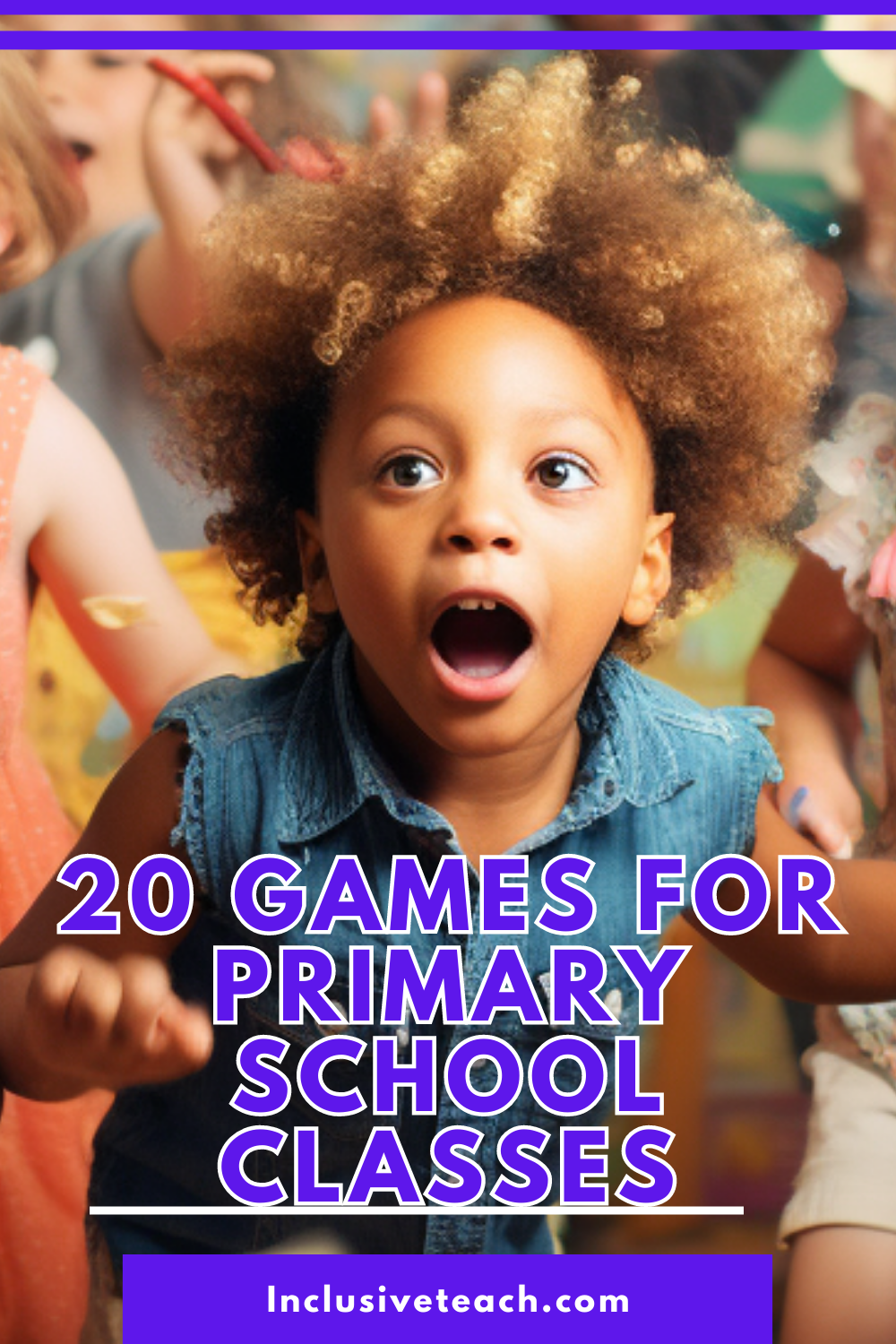
10 Active Primary Games
Here are 10 active classroom games for primary school kids. You might also like our finger gym post for developmental activities and cool games for primary and pre-school children:
- Star Jump/Squat Relays
Learning intention: Teamwork, cooperation, physical activity
Play time: 15 minutes
Number of players: 2 teams of 4-6 players
Resources: None
How to play: Split the class into teams. On “go”, the first player in each team does 5 star jumps then taps the next player to go. The first team to finish wins.
- Spider’s Web
Learning intention: Coordination, following instructions, physical activity
Play time: 10 minutes
Number of players: Entire class
Resources: Ball of yarn or string
How to play: One player holds the end of the yarn/string and tosses it to another player, who catches it. Players gently toss the yarn between each other to create a “web”. Follow instructions like “duck”, “leap” to get in and out of the web.
- Hoop Relays
Learning intention: Motor skills, teamwork, coordination
Play time: 15 minutes
Number of players: 2 teams
Resources: Hula hoops, cones
How to play: Mark a starting line with cones. Split into teams, with each player holding a hoop. On “go”, the first player puts the hoop around their waist and runs to the other side and back, tagging the next player. Winning team finishes first.
- Freeze Dance
Learning intention: Following instructions, motor skills, physical activity
Play time: 10 minutes
Number of players: Entire class
Resources: Music player\
How to play: Play music and call out moves like “twist”, “jump”. When music stops, freeze in position. Last one frozen sits down. Repeat until one is standing.
- Follow the Leader
Learning intention: Listening skills, cooperation, creativity
Play time: 10 minutes
Number of players: Entire class
Resources: None
How to play: Select a leader who leads the group in movements, actions and motions. Others mimic the leader. New leader is selected when old leader chooses.
- What’s the Time Mr Wolf?
Learning intention: Impulse control, turn taking
Play time: 10 minutes
Number of players: 6-10 players
Resources: Timer or clock
How to play: One is Mr. Wolf facing away. Others line up far away. Mr. Wolf calls “What’s the time?” Time is called. Group takes that many steps. First to Mr. Wolf is the next Mr. Wolf.
- Bear Hunt
Learning intention: Imagination, cooperative play, physical activity
Play time: 15 minutes
Number of players: Entire class
Resources: None
How to play: Choose a “leader” and follow their instructions through an imaginary forest, e.g. “hop like a bunny”. Locate a “bear” then all pretend to chase it back through the forest and home. New leader is chosen.
- Parachute Play
Learning intention: Teamwork, motor skills, cooperation\
Play time: 15 minutes
Number of players: Entire class
Resources: Parachute
How to play: Students hold the parachute around the edges. Lift up and down together. Experiment with shapes, waves, and tossing toys or balls onto the parachute.
- What’s Missing?
Learning intention: Problem solving, observation skills
Play time: 10 minutes
Number of players: Groups of 4-6
Resources: Bag of 10-15 small toys/objects
How to play: Each group picks 5 toys. One leaves the room. Another takes one toy away. Returnee tries guessing missing toy with clues from others.
- Queen’s Commands
Learning intention: Listening skills, coordination, agility
Play time: 15 minutes
Number of players: Entire class
Resources: Cone for the “Queen”
How to play: One is the “Queen” by the cone. Calls out instructions like “jump”, “spin”, “hop”. Class responds quickly and Queen awards points for speed/coordination. New Queen is selected.
5 Problem Solving Primary Games
Here are 5 problem-solving games for quieter classroom activities:
- Code Breakers
Learning intention: Problem-solving, logic, communication
Play time: 15 minutes
Number of players: Groups of 3-4
Resources: Paper/pens for codes
How to play: One student creates a code (e.g. A=1, B=2). Others must crack it to write a simple message.
- Tangram Puzzles
Learning intention: Spatial reasoning, patience, problem-solving
Play time: 10-15 minutes
Number of players: Individual/pairs
Resources: Tangram puzzle pieces
How to play: Students arrange puzzle pieces to recreate shapes/images within a time limit.
- Blind Contours
Learning intention: Observation, cooperation, problem-solving
Play time: 10 minutes
Number of players: Pairs
Resources: Paper, pencils
How to play: Partners take turns tracing each other’s hidden objects/shapes accurately by touch alone.
- Enigma Codes
Learning intention: Logic, pattern recognition, problem-solving
Play time: 15 minutes
Number of players: Small groups
Resources: Coded messages, cipher wheels
How to play: Students use cipher wheels to decode messages within time limits.
- What Am I?
Learning intention: Deduction, questioning, problem-solving
Play time: 10-15 minutes
Number of players: Groups of 4-6
Resources: Clue cards for objects/animals
How to play: One student thinks of a card. Others ask yes/no questions to guess the answer.
5 Calming Primary Games and Activities
Here are 5 calming games that could help kids to self-regulate. We have a full post on calming primary classroom activities for those times you just need them to settle.
- Colouring Quest
Learning intention: Focus, relaxation, self-regulation
Play time: 10-15 minutes
Number of players: Individual\2-3
Resources: Colouring sheets, crayons, markers
How to play: Provide simple colouring pages in A3 for small groups with a focus on slow, controlled colouring. Optional mindfulness prompt.
- Breathing Exercises
Learning intention: Deep breathing, relaxation, self-soothing
Play time: 5-10 minutes
Number of players: Whole class
Resources: None
How to play: Lead students in deep breathing exercises (e.g. belly breathing, 4-7-8 rhythm) while seated or laying down.
- Progressive Muscle Relaxation
Learning intention: Tension release, self-awareness, calm
Play time: 10 minutes
Number of players: Whole class
Resources: None
How to play: Guide students to sequentially tense and relax different muscle groups from head to toe.
- Visualisation Journey
Learning intention: Imagery, relaxation, oneness
Play time: 5-10 minutes
Number of players: Whole class
Resources: Verbal prompts
How to play: Use verbal cues or a calming youtube video (end of section) to visually guide students through a calming imaginary experience. You could link this to a topic. I have included a video that is drifting down the Nile to go with our Egypt Sensory Story
5. Group Chalk Drawing Task
Learning intention: Imagery, use of materials, creativity
Play time: 10-20 minutes
Number of players: 6-7
Resources: Chalk Prompt Sheet
How to play: Use verbal cues or a calming youtube video (end of section) to visually guide students through creating a group chalk drawing on a topic or theme. A great and versatile simple primary school game
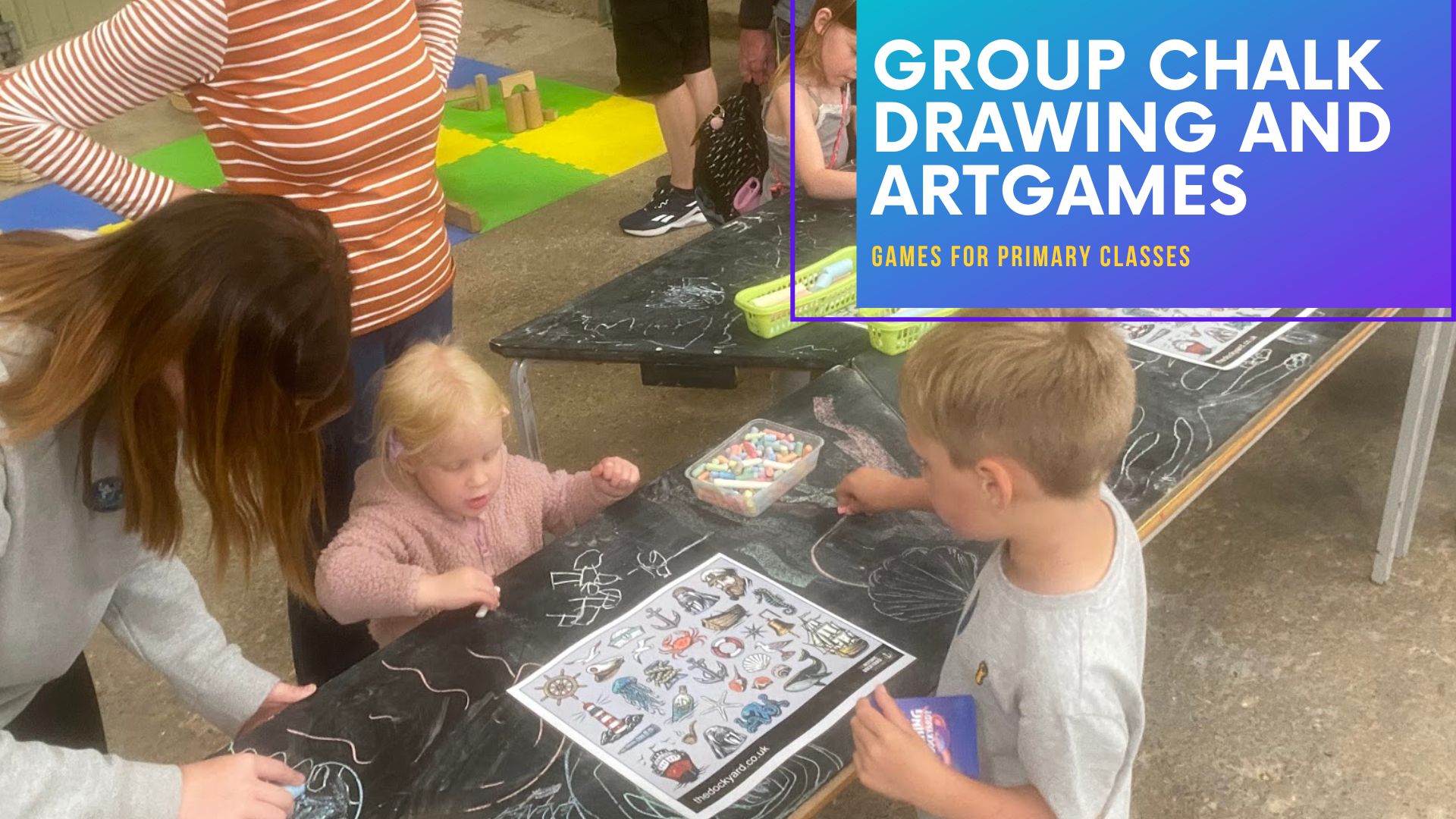
Primary Games and Activity Ideas
There are a huge number of primary games and activities you can create for your pupils with limited resources.
- Playing with Ice – 22 Engaging Ice Play Activities
- Painting with balls – Painting with Balls: 5 Sensory Art Activities
- Imagination play using cardboard boxes – 100 Ways Cardboard Boxes Can Be Used For Play
- Splatter painting – The Ultimate Guide To Splatter Painting
- Playing with marbles – Playing a Marbles Game
- Playing with dough – Playing with Dough for Special Needs and Primary School Children
- Thanksgiving activities – 20+ Great Thanksgiving Activities for Kindergarten
- Elf on the shelf educational activities – 140+ Elf on the Shelf Ideas For Your Classroom
Further Reading on Games For Primary Children
You may like the following books about primary games and activities. I also recommend 100 ways to Learn Through Play which we did a full review on here.


